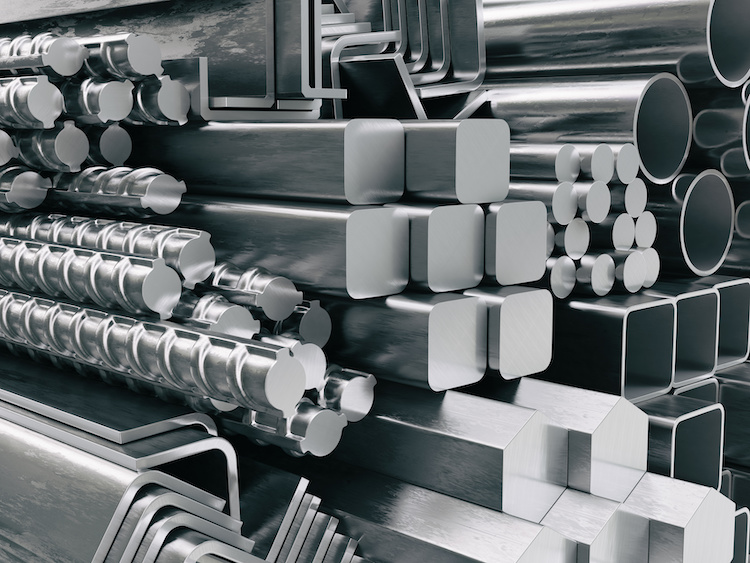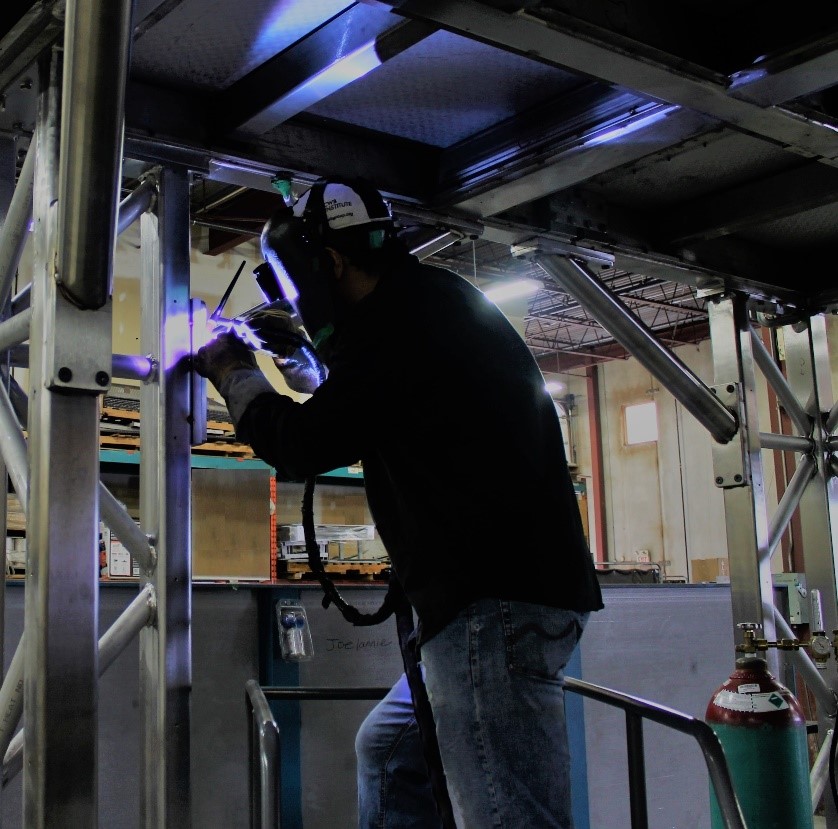Alpha Reo: Leading the Way in Reinforced Steel Solutions
Alpha Reo: Leading the Way in Reinforced Steel Solutions
Blog Article
Innovative Patterns in Steel Manufacture: Enhancing Toughness and Precision
In the realm of steel manufacture, the search of resilience and precision has led to a wave of innovative fads that are improving the sector. These trends are not just shaping the existing yet additionally laying the foundation for the future of steel fabrication, promising additional improvements in durability and precision.
Advanced Welding Technologies
In the realm of steel construction, the adoption of innovative welding technologies has significantly transformed the industry's method to achieving remarkable high quality and accuracy in structural welds. Advanced welding innovations, such as laser beam of light welding and friction stir welding, have become game-changers in the area. Laser light beam welding uses a concentrated laser light beam to sign up with steel elements with amazing precision and rate, making it suitable for slim products and complex styles. On the other hand, rubbing mix welding develops extremely strong bonds by mechanically intermixing the particles of the products at the joint, getting rid of the requirement for thawing the metal. These technologies supply countless benefits, including minimized heat-affected zones, minimal distortion, and boosted mechanical properties in the bonded joints. By leveraging these innovative welding methods, steel fabricators can boost the toughness, strength, and accuracy of their architectural welds, meeting the significantly requiring requirements of modern-day construction projects.
Robotic Automation in Manufacture
Embracing robot automation has actually become a foundation of contemporary steel manufacture practices, enhancing and improving procedures performance across the industry. Robots are changing the means steel components are produced, using unparalleled precision and speed while minimizing human mistake. These automated systems can take care of recurring tasks with consistent precision, resulting in better final result.
One secret benefit of robot automation in steel manufacture is the ability to work around the clock without fatigue, considerably enhancing manufacturing result. This continual procedure lessens downtime and speeds up task timelines, inevitably conserving prices for suppliers. In addition, robots can be configured to carry out elaborate tasks that may be difficult or harmful for human workers, boosting security in the office.
In addition, robotic automation allows seamless combination with various other digital innovations, such as computer-aided layout (CAD) software and Net of Things (IoT) systems (steel fixing). This interconnected approach improves interaction between different phases of fabrication, enhancing operations and ensuring real-time tracking and control. As the steel fabrication industry proceeds to evolve, robotic automation stands apart as a transformative pressure driving performance and accuracy in manufacturing processes

High-Strength Alloy Growth
The advancement of high-strength alloy advancement in steel fabrication is reshaping the industry's method to improving material sturdiness and performance. High-strength alloys are crafted to exhibit superior mechanical homes, such as enhanced tensile stamina, strength, and deterioration resistance contrasted to typical steel qualities. By integrating these sophisticated alloys into fabrication processes, makers can create components that withstand greater stress and anxiety degrees and harsh settings, bring about even more resilient and dependable final result.
One trick benefit of high-strength alloy development is the capacity to lower product density without compromising architectural stability. This not only results in lighter-weight components yet likewise contributes to set you back savings and boosted efficiency in manufacture and assembly procedures. Additionally, the enhanced strength-to-weight ratio of these alloys enables for the design and building and construction of structures with greater load-bearing capacities while decreasing general weight.
3D Modeling and Simulation Software Application
Improvements in steel construction procedures have actually been substantially propelled by the integration of advanced 3D modeling and simulation software tools. These tools allow makers to develop thorough online models of their jobs, allowing them to envision the last item with precision before any physical work begins.

Sustainable Practices in Steel Manufacturing
Incorporating lasting practices into steel discover this info here production procedures is important for decreasing environmental influence and guaranteeing long-lasting source accessibility. One vital sustainable technique is the adoption of energy-efficient innovations to reduce greenhouse gas emissions during the steel manufacturing procedure. This consists of using renewable power sources, such as solar or wind power, to power steel plants and executing energy-efficient tools to maximize power usage.
An additional essential facet of lasting steel production is the accountable sourcing of resources. This includes making certain that the iron ore and other sources used in steelmaking are acquired from ethical and ecologically pleasant resources. By promoting transparency in the supply chain and adhering to stringent ecological criteria, steel suppliers can minimize the unfavorable influences of source removal on basics local communities and communities.

Final Thought
To conclude, the innovative fads in steel construction such as advanced welding technologies, robot automation, high-strength alloy development, 3D modeling and simulation software, and lasting methods are enhancing the sturdiness and precision of steel products. These improvements are transforming the steel construction sector by enhancing performance, sustainability, and high quality. It is clear that the future of steel construction depends on accepting these cutting-edge innovations to meet the needs of modern building and manufacturing markets.
In the world of steel manufacture, the quest of resilience and accuracy has led to a wave of ingenious fads that are reshaping the industry.In the world of steel fabrication, the adoption of sophisticated welding innovations has actually significantly revolutionized the sector's method to attaining superior high quality and accuracy in architectural welds. As the steel fabrication industry right here continues to advance, robotic automation stands out as a transformative force driving performance and accuracy in manufacturing procedures.
Moreover, recycling and reusing steel scrap and waste materials play a substantial duty in enhancing the sustainability of steel production. Alpha reo.In final thought, the ingenious fads in steel fabrication such as advanced welding innovations, robotic automation, high-strength alloy advancement, 3D modeling and simulation software program, and lasting practices are improving the toughness and accuracy of steel items
Report this page